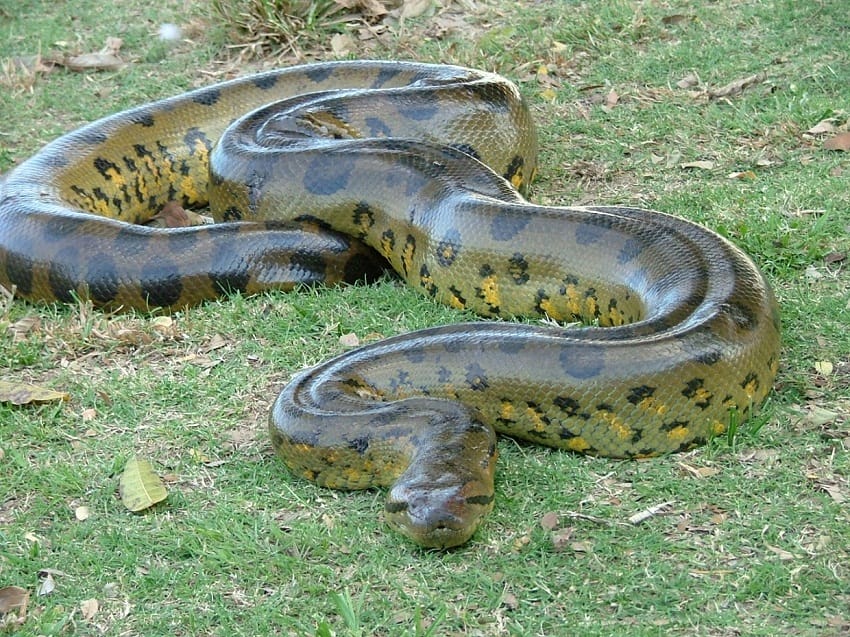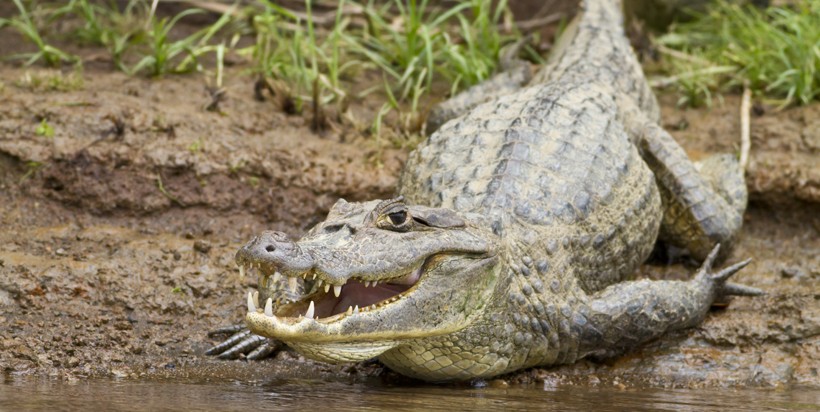Post by rock on May 11, 2019 23:46:40 GMT 5
Green Anaconda - Eunectes murinus
Eunectes murinus is a non-venomous boa species found in South America. It is the heaviest known snake species. The term anaconda (without further qualification) often refers to this species, though the term could also apply to other members of the genus Eunectes. Eunectes murinus is found in South America east of the Andes, in countries including Colombia, Venezuela, the Guianas, Ecuador, Peru, Bolivia, Brazil, the island of Trinidad and as far south as northern Paraguay. Anacondas live in swamps, marshes, and slow-moving streams, mainly in the tropical rain forests of the Amazon and Orinoco basins. They are cumbersome on land, but stealthy and sleek in the water. Their eyes and nasal openings are on top of their heads, allowing them to lie in wait for prey while remaining nearly completely submerged. The Green Anaconda is one of the world's longest snakes, reaching more than 6.6 m (22 ft) long. Reports of anacondas 35–40 feet or even longer also exist, but such claims need to be regarded with caution as no specimens of such lengths have ever been deposited in a museum and hard evidence is lacking. Although the reticulated python is longer, the anaconda is the heaviest snake. The longest (and heaviest) scientifically recorded specimen was a female measuring 521 cm (17 ft 1 in) long and weighing 97.5 kilograms (215 lb).

Spectacled caiman
Spectacled caiman is a reptile that belongs to the family of alligators. There are 3 subspecies of spectacled caimans that can be found in Central and South America. Spectacled caimans inhabit lowland wetlands. They spend almost entire life in the slow-moving rivers, ponds and lakes.Image result for spectacled caiman size and weight
It grows to a length of 1.4–2.5 metres (4.6–8.2 ft) and a weight of 7–40 kilograms (15–88 lb), with males being both longer and heavier than females. Its diet varies seasonally, commonly consisting of crabs, fish, mammals, and snails.

Eunectes murinus is a non-venomous boa species found in South America. It is the heaviest known snake species. The term anaconda (without further qualification) often refers to this species, though the term could also apply to other members of the genus Eunectes. Eunectes murinus is found in South America east of the Andes, in countries including Colombia, Venezuela, the Guianas, Ecuador, Peru, Bolivia, Brazil, the island of Trinidad and as far south as northern Paraguay. Anacondas live in swamps, marshes, and slow-moving streams, mainly in the tropical rain forests of the Amazon and Orinoco basins. They are cumbersome on land, but stealthy and sleek in the water. Their eyes and nasal openings are on top of their heads, allowing them to lie in wait for prey while remaining nearly completely submerged. The Green Anaconda is one of the world's longest snakes, reaching more than 6.6 m (22 ft) long. Reports of anacondas 35–40 feet or even longer also exist, but such claims need to be regarded with caution as no specimens of such lengths have ever been deposited in a museum and hard evidence is lacking. Although the reticulated python is longer, the anaconda is the heaviest snake. The longest (and heaviest) scientifically recorded specimen was a female measuring 521 cm (17 ft 1 in) long and weighing 97.5 kilograms (215 lb).

Spectacled caiman
Spectacled caiman is a reptile that belongs to the family of alligators. There are 3 subspecies of spectacled caimans that can be found in Central and South America. Spectacled caimans inhabit lowland wetlands. They spend almost entire life in the slow-moving rivers, ponds and lakes.Image result for spectacled caiman size and weight
It grows to a length of 1.4–2.5 metres (4.6–8.2 ft) and a weight of 7–40 kilograms (15–88 lb), with males being both longer and heavier than females. Its diet varies seasonally, commonly consisting of crabs, fish, mammals, and snails.






